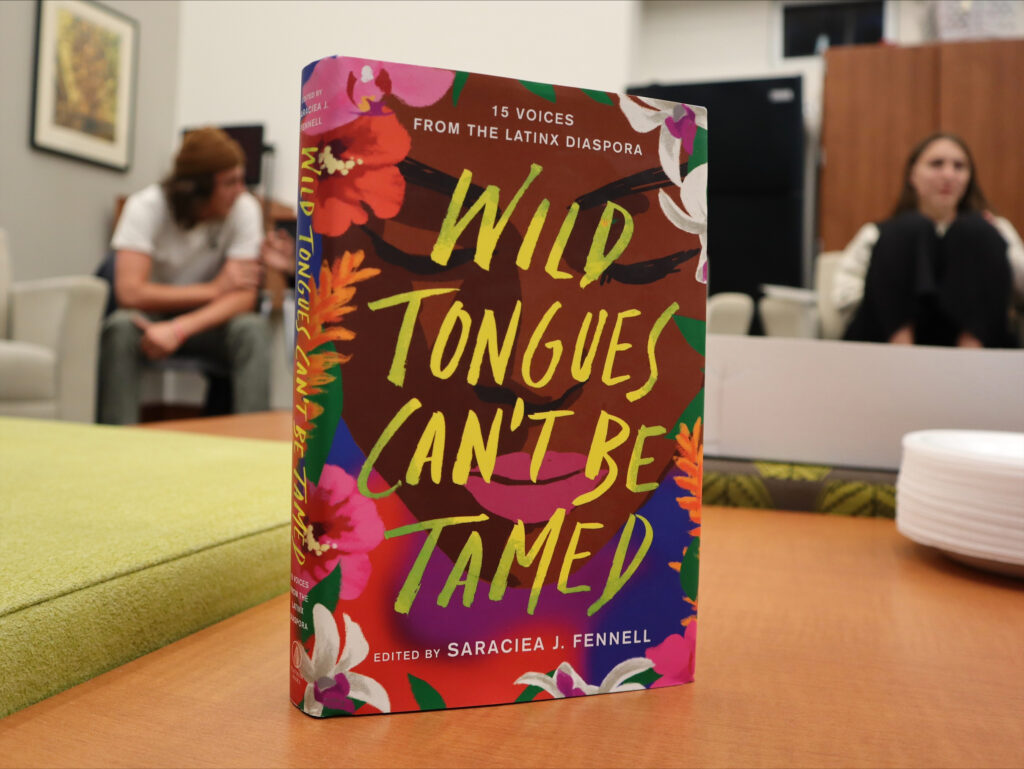In today’s world, it can be extremely hard to find a place where you fit in today’s society for several different reasons. Whether that be because of your race, age, gender or disability, it is difficult to discover a community where you truly belong. Recently on Northwestern’s campus, the Bridge Center has set up its own book study, dedicated to Hispanic Heritage Month, making Hispanic students feel welcome and known on campus. The book they are reading, Wild Tongues Can’t Be Tamed, is written from the perspective of different Latinx authors across the world and edited by Saraciea J. Farnell. Each of the 15 chapters stars a different Latinx individual and experiences of what the world is like through their eyes.
Though the Bridge Center initially started it because of Hispanic heritage month, several other factors played into the creation of the group. Social Enterprise major, Jillian Simon, and faculty member Martha Draayer came together to give people an opportunity to learn. “One of our 4 pillars is LEARN (Love, Link, Listen, Learn),” said Draayer. “That is how we get to bridge-building, embracing one another and growing together as a beloved community. We also see more of God through the beautifully diverse world he created. One way we are celebrating and bridging these two ideas together is by learning more about Hispanics/Latinx and celebrating their contribution to this country. The book study is a result of providing campus an educational opportunity to learn more about Hispanic/Latinx culture. We often get clumped into one large homogenous group, however, that is far from true. The Latinx community is wide, diverse and far-ranging. The book study is highlighting the diaspora of Latinx voices from different Latin American countries with very different backgrounds.”
Sophomore Elena Lee, who participates in the club, mentioned how it is “an opportunity for students to look to a guided resource on information regarding a current world topic.”
The book study typically starts with the participating students reading a set of three or four chapters in their own free time. They come together every Wednesday to discuss what they read. Participant Jessica Nibbelink explained how Draayer opens the discussion, and then passes it over to the students. “Different Latin voices around campus are invited to share their voices in the discussion of each chapter,” said Nibbelink. “[it is] unique to hear a different perspective on life in another person’s eyes.”
Students have had great experiences with the book and study. “So far, my biggest takeaway is that above all else the book humanizes the systemic issues that I’ve heard about for a long time,” said senior Amelia Holt. “I would like to say I was aware of a lot of the problems, but the book puts it in the context of a human’s life, and it makes it more understandable and it’s very heart wrenching.”
More than 50 million Latinx people have different cultures, rather than one common culture. Because of this, Latinos may feel left out, and why something like the Bridge Center’s book study could make Latinx students feel comfortable on campus, while also teaching students of different cultures about Latinx culture. This book study allows all students on campus to share their experiences.
